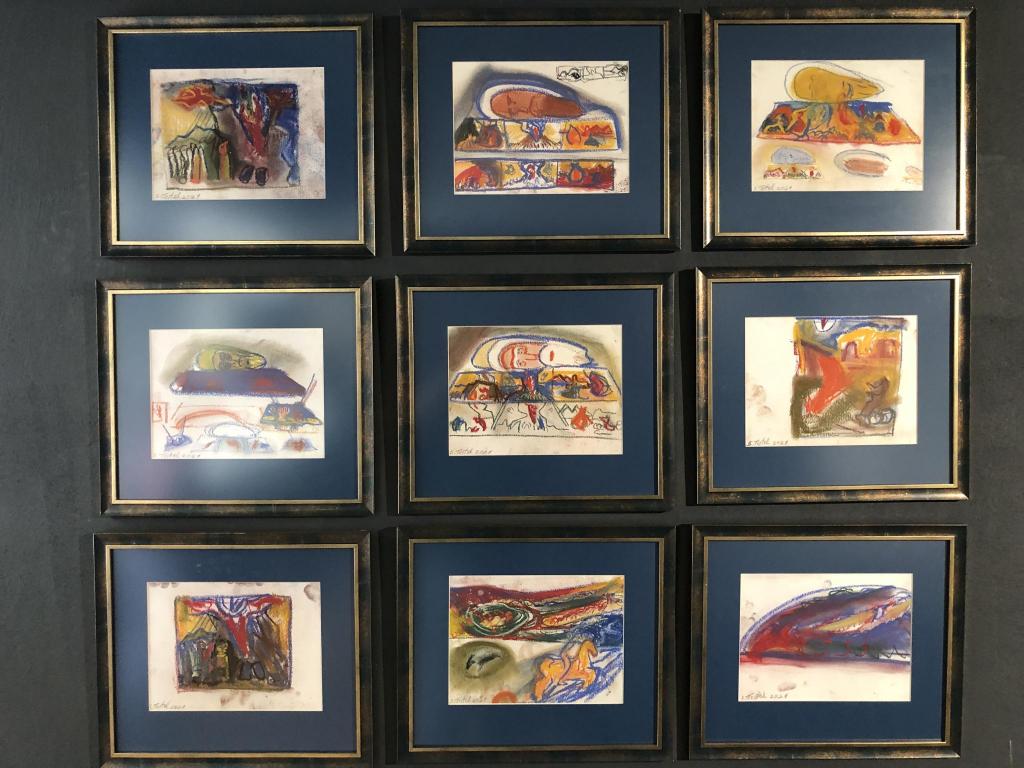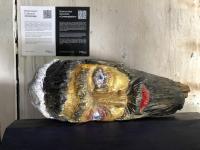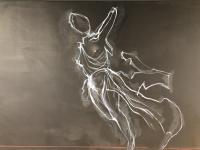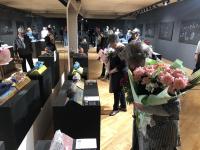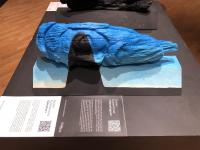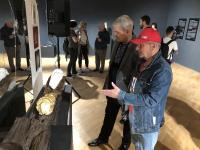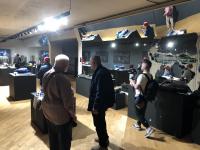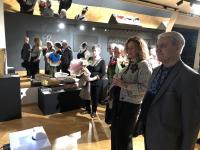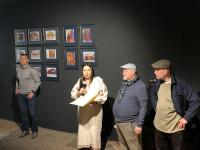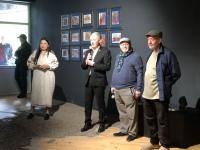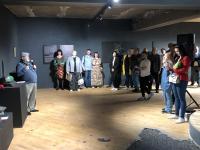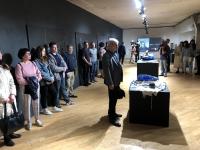The exhibition project "Exodus: Path from Non-existence", which was recently unveiled in Kyiv, brought together the works of the Lithuanian Daumantas Levas Todesas and the Ukrainian Matvii Vaisberg, who reflect on the path to freedom of the Jewish and Ukrainian peoples.
"Path from Non-existence" begins in a symbolic place - the sports complex "Avangard" on Illenka Street (one of the old names - Melnikova), built in Babyn Yar on the site of the old Jewish cemetery. Unfortunately, this place took on a new tragic meaning last year: on March 1, 2022, during the shelling of the TV tower, a Russian missile hit here, killing six Ukrainians. Thus, "Avangard" became a monument of new criminal encroachments on human lives.
In the sports complex, traces of last year's shelling have already remained as a memorial - a mutilated facade, ash-covered exercise equipment and a crushed floor are an eloquent reminder that genocide is a terrible crime against humanity, which continues into the 21st century. On May 14, on the Day of Remembrance of Ukrainians who saved Jews during the Second World War, a symbolic exhibition was opened here, which makes sense of the traumatic past and present of the Jewish and Ukrainian peoples.
"Exodus: Path from Non-existence" unites creative projects of outstanding Ukrainian artist Matvii Vaisberg's "Thin Red Line" and Lithuanian artist Daumantas Todesas' "Moses' Journey". "The Ukrainian and Jewish peoples share a complex historical path in their way in aspiring for freedom. "Exodus: The Path from Non-existence" is designed to show this unity," says its curator, head of the National Historical Memorial Reserve “Babyn Yar”, Roza Tapanova.
Todesas' "Travels of Moses" before Kyiv was displayed in Kielce, Poland. Roza Tapanova says she immediately understood that the project must be presented in Ukraine. They decided to combine the reflection of the Lithuanian artist with a series of works by Matvii Vaisberg dedicated to Mariupol and the path of the Ukrainian people to freedom.
In the "Moses' Journey" project, Daumantas Todesas was inspired by the almost-lost work of the Lithuanian sculptor Jakovas Bunka, who was deported from Lithuania to Siberia at the beginning of the Second World War. Yakovas survived the war, returned to his homeland, and the theme of historical memory became the key to his work.
After the war, in memory of the dead Jews, Bunka began to make wooden memorial figures above the places of executions, in particular, he created the series "Moses from Platelai", which was placed on a hill near the lake in the Lithuanian town of Platelai. Over time, the work was almost destroyed, and a few years ago Todesas decided to restore it, gathering dozens of artists from around the world so that each of them would give the sculpture a new life and tell the story of the struggle for freedom of his people. One of the participants was the famous Ukrainian artist Matvii Vaisberg, who created his version of the Moses mask for the project.
Daumantas Todesas admits that he dreamed of showing "Moses' Journey" precisely in Kyiv because this exhibition has no more appropriate place in the world. "They say that art is to a certain extent a weapon. Well, I also want to fight for Ukraine in this way," admits the artist, who personally came to the exhibition's opening in Kyiv.
The second part of the project "Exodus: Path from Non-exist" is Matvii Vaisberg's reflection on the present day of Ukraine. At the exhibition, Weisberg presents a series of insightful canvases, on which Ukrainian defenders are depicted in symbolic images of ancient warriors - mutilated, but invincible. The series, which later received the name "Thin Red Line", was created in the spring of the terrible year 2022 and is dedicated to the defence of Mariupol.
"At the beginning of the full-scale invasion, I was in Munich and I was going to the Glyptothek, looking at the ancient Greek friezes," says Weisberg, - Some had no arms or legs, some only had a torso. I looked - and saw in these images a connection with our defenders of Mariupol. And I started to draw. I looked at the ancient warriors and thought that they had been standing for 3,000 years—wounded, mutilated, but standing. As well as our defenders."
The artist admits that in a certain sense, this series became therapeutic for him because he painted precisely at the time when the whole world received the most tragic news from Mariupol.
A thin red line unites all of Weisberg's canvases. This term defines an extraordinary defence on the edge of the impossible. The red line, seemingly weak and thin, is powerful - it gives strength and holds the mutilated warriors. Mariupol, Kharkiv, Kyiv, Chernihiv, Sumy, Mykolaiv, Bakhmut, Avdiivka, Bucha, Irpin, Kupyansk, and Izium - all Ukrainian cities and villages turned out to be the Red Line that prevents the enemy from breaking the Ukrainians.
This exhibition is one of the first events implemented within the framework of the new strategy for the development of Babyn Yar. "Our task is that it ceases to be a necropolis and instead becomes a place of memory. After all, today we have to understand our past in order to understand the future, and this is impossible without a living cultural dialogue," says Tapanova. In the near future, a summer cinema will open, showing films about the genocide and memory; symbolic routes through the park will appear and a historical and cultural program of events will be presented. Already this summer, symbolic murals by Matvii Vaisberg will appear on the territory of the summer cinema — in particular, the already well-known Ukrainian "Angel of the ZSU", a true symbol-guardian of Ukraine.
"Now it is especially important - because any restoration cannot take place without memorialization," says Roza Tapanova and admits that she wants Ukrainians to come to Babyn Yar not only twice a year to honour the memory of the dead, but for it to become a place for thinking and finding answers to today's questions.
